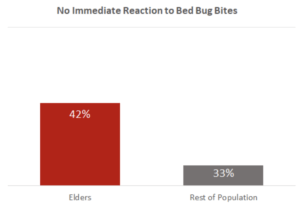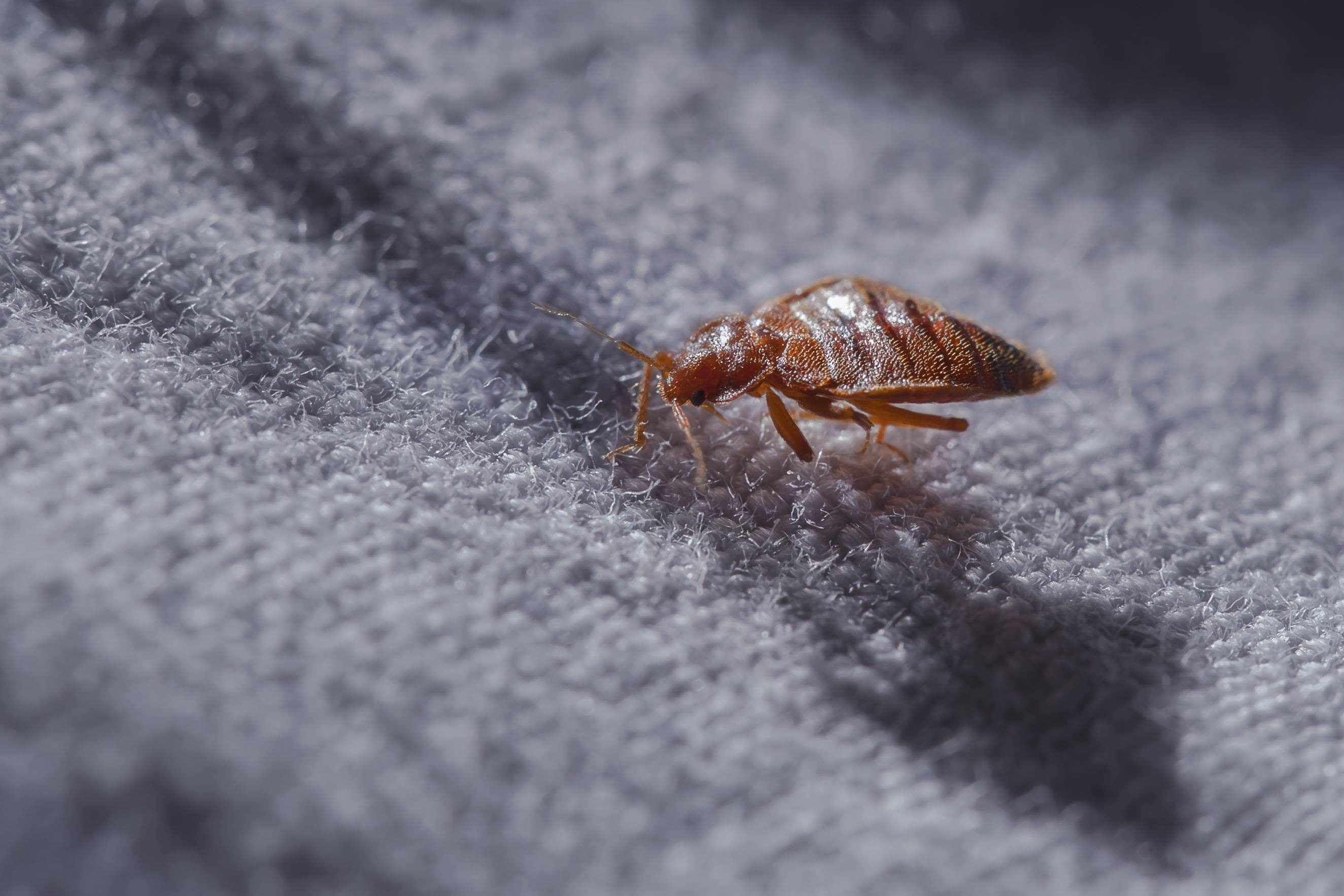- 59% of senior living facilities reported a pest infestation in 2018, a number that has only grown as many pests develop immunities to traditional toxic pest control chemicals.
- With the senior population significantly less likely to report initial infestations, the burden of bed bugs only exacerbates.
- Facilities lose thousands of dollars per infestation with hotels reporting total costs of $23,600 per infestation.
The 2020 COVID-19 pandemic has inflicted unfathomable damage on senior living residents and their staff. With over 40% of all US coronavirus deaths being linked to the senior living industry, facility executives have tirelessly worked to mitigate this tragedy and implement increased precaution.
Unfortunately, other problems do not recede during this crisis; in fact, ever-persisting pests have come to thrive in this new world. Over the past decade, bed bugs have experienced a resurgence in the United States with 99% of pest control companies reporting treating bed bugs in 2018 compared to just 25% in 2000.(2) This is not a fluke; a 2016 study found that the bugs have developed a thicker outer shell to resist current commercial pest products, leading to the persistence of these unwanted visitors.
Senior living remains one of the primary victims of the evolving bed bug epidemic, as 59% of facilities in the industry reported experiencing an infestation in the last year. For those unlucky facilities that confront bed bugs, their problems often snowball: a 2017 case study found that a 937 bed healthcare facility in Cleveland experienced 180 infestations in just one year. The treatments, costing up to $1,050 per infestation, clearly proved to be ineffective at preventing the problem. Perhaps more frightening, administrators believe that all of these infestations were reintroductions from the outside rather than a structural problem, displaying the difficulty of controlling bed bugs.
With increasing resident and staff turnover in light of the pandemic, facilities are even more vulnerable to bug intrusions. Coupled with increased confined living with hosts always available, bed bugs now have the ability to thrive more than ever before.
Additionally, the demographics of senior living facilities are conducive for bed bug infestations. According to a University of Kentucky study, elders are less likely to show initial reactions to a bed bug bite.

While this may appear to be a benefit, delayed reactions decrease the likelihood for bugs to be initially detected. Combined with patients possessing conditions that inhibit their ability to recognize and report bugs, infestations have the ability to grow and multiply, increasing costs dramatically. A study conducted by Rutgers University found that uninhibited bed bugs in an apartment room had spread to the four surrounding units after just one day, showing that a delayed response can multiply the impact tremendously. When detected, facilities must grapple with the costs of commercial pest control–both the sticker and hidden costs.
First, facilities must consider the consequences of inviting outside exterminators into the facility during COVID-19. This extra traffic spurs anxiety and risk from bringing in COVID, an existential threat to the facility.
Once exterminators are contacted to treat pests, the fallout can prove costly. Each situation poses widely variable costs of treatment depending on its circumstances, but they are unpleasant nonetheless.
While studies have not been conducted specifically for senior living facilities, researchers agree that costs are quite high. In 2016, the average cost to disinfect a single unit ranged from $800 to $1200. Especially in senior living facilities where infestations can easily go unnoticed, costs accumulate quickly.
However, treatment costs do not display the full story, as each infestation results in subsequent costs that can total more than the treatment costs. In 2016, Orkin reported that hotels lose an average of $6,383 per infestation event in both treatment and opportunity costs. Moreover, 45% of these facilities reported facing litigation resulting in the costs being magnified to $23,600 per infestation event.
Senior living facilities experience similar burdens when dealing with pest infestations. With increased CMS regulations likely to mount following the COVID-19 pandemic, it will become increasingly imperative for facilities to mitigate the risk of pest infestations. More importantly, infestations may put residents and staff in harm’s way.
Next time… We will dive further into the human damages that pests cause, and how these costs can spiral quickly.
References:
1 – “More Than 40% of U.S. Coronavirus Deaths Are Linked to Nursing Homes,” New York Times. https://www.nytimes.com/interactive/2020/us/coronavirus-nursing-homes.html
2 – Wolters Kluwer Health Study, August 2019
3 – Lilly DG, Latham SL, Webb CE, Doggett SL (2016) Cuticle Thickening in a Pyrethroid-Resistant Strain of the Common Bed Bug, Cimex lectularius L. (Hemiptera: Cimicidae). PLoS ONE 11(4): e0153302. https://doi.org/10.1371/journal.pone.0153302
4 – 2018 Bugs without Borders
5 – Scarpino, S. V. and B. M. Althouse. 2019. “Uncovering the Hidden Cost of Bed Bugs.” Proceedings of the National Academy of Sciences of the United States of America 116 (15): 7160-7162. doi:10.1073/pnas.1902404116.
6 – https://www.pctonline.com/article/pct1002_bedbugs/, University of Kentucky study is embedded in article
7 – Cooper R, Wang C, Singh N (2015) Mark-Release-Recapture Reveals Extensive Movement of Bed Bugs (Cimex lectularius L.) within and between Apartments. PLoS ONE 10(9): e0136462. https://doi.org/10.1371/journal.pone.0136462
8 – Ali Gharouni, Lin Wang. Modeling the spread of bed bug infestation and optimal resource allocation for disinfestation. Mathematical Biosciences and Engineering, 2016, 13(5): 969-980. doi: 10.3934/mbe.2016025
9 – Scarpino, S. V. and B. M. Althouse. 2019. “Uncovering the Hidden Cost of Bed Bugs.” Proceedings of the National Academy of Sciences of the United States of America 116 (15): 7160-7162. doi:10.1073/pnas.1902404116.
Keywords:
Senior living, senior care, assisted living, bedbugs, pest control, retirement, elderly, senior living community, elderly care, seniors, independent living, retirement community, senior life, nursing homes






